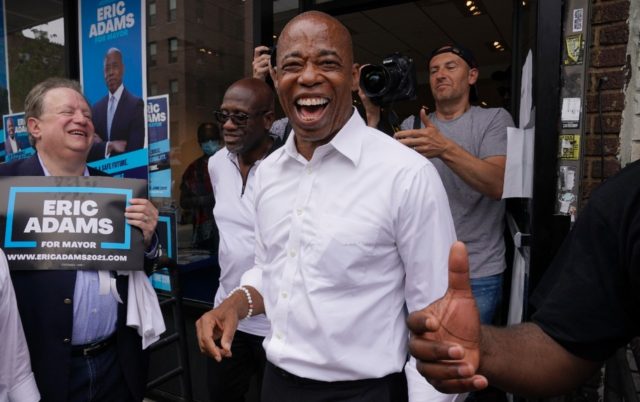The battle to be New York’s next mayor was in disarray Wednesday after the city’s election authorities removed preliminary results that had showed the contest narrowing.
The Board of Elections on Tuesday released a new count of votes in the Democratic primary, the key race that will select the Big Apple’s post-pandemic mayor.
The unofficial tally showed that two candidates had gained ground on frontrunner Eric Adams, the former police officer who is Brooklyn borough president.
But on Tuesday night, the board posted a tweet saying there had been a “discrepancy” in the ranked-choice voting results.
The numbers were removed from its website and replaced by a message that said the results would now be released “starting on June 30.”
The board issued a statement later explaining the count had included “both test and election night results” that produced “approximately 135,000 additional records.”
It apologized for the error and said it would count the ranked-choice ballots again.
The board “has taken immediate measures to ensure the most accurate up to date results are reported,” it added.
New York City is using ranked-choice voting for the first time in a mayoral race.
The new voting system asked voters to rank up to five candidates in order of preference when they cast their ballots earlier this month.
Early results on primary day on June 22 showed Adams, a moderate, ahead with more than 30 percent of the vote.
His closest rivals: Maya Wiley, a Black lawyer specializing in civil rights, was in second place with about 22 percent while Kathryn Garcia, another moderate, had about 19 percent.
The results released on Tuesday and then removed showed Adams only slightly ahead of Garcia, with Wiley in third.
They are just based on votes cast in person. Tens of thousands of absentee ballots will ultimately also need to be counted.
Unless a candidate garners more than 50 percent of first-choice votes — an unlikely scenario — the candidate who came in last is eliminated, and the ballots cast for them are redistributed to voters’ second choice, and so on until a candidate finally exceeds the 50 percent threshold.
This system may not produce a clear winner until mid-July.
Since New York is a Democratic stronghold, the eventual winner is virtually guaranteed to win November’s mayoral election against the Republican candidate.

COMMENTS
Please let us know if you're having issues with commenting.